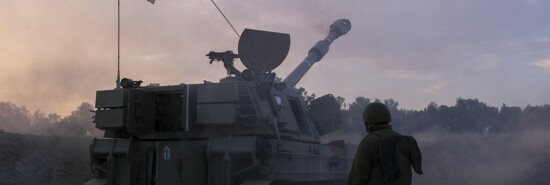
Israel’s ground offensive in Gaza seeks to thread a very thin needle
Tom Rogan
Video Embed
Thus far defined by advances into very limited areas of the Gaza Strip, Israel’s ground offensive against Hamas is underway. The Israel Defense Forces are attempting to thread a near-thin needle. Namely, minimizing IDF and civilian casualties while steadily degrading Hamas.
Israel’s problem?
Its present approach cannot endure. Hamas will retain some measure of Palestinian support whatever the outcome of this conflict. But to destroy Hamas as a functioning military and political entity capable of threatening Israel at scale, the IDF will eventually have to conduct ground force operations across Gaza. The nature of IDF capabilities, Hamas tactics, and Gaza’s largely dense urban environment will mean that scaled ground operations will entail high casualty rates.
FBI RAIDS HOME OF ERIC ADAMS FUNDRAISER BRIANNA SUGGS AS HE CANCELS DC MEETINGS
At present, IDF ground forces are exerting pressure in northern Gaza and attempting a dissection operation in central Gaza. Their intent is to weaken Hamas in northern Gaza, limiting their rocket operations against Israel while dissecting northern Gaza City from the rest of Gaza. This effort aims to limit Hamas’s mobility, create friction within its military organization, and cordon the terrorist group’s ability to move and hide its hostages.
With only cautious advances so far, the IDF wants to force Hamas to organize a defensive response. This defensive response, the IDF hopes, will enable it to gather intelligence on Hamas commanders, weapons stockpiles, and the location of Hamas combat units. This intelligence can then feed targets for IDF airstrikes, softening up Hamas before further ground action.
The IDF’s primary problem is that Hamas is patient. It wants to suck the IDF deeper into Gaza before conducting a scaled defense. Hamas knows that deeper IDF operations will open IDF ground units up to ambushes while limiting their means of artillery and air support. Hamas will be watching growing international concern over Israel’s offensive with glee, hoping that the longer it continues and the more Palestinian civilian casualties grow, the greater the pressure will be on Israel to agree to a ceasefire. Hence why, for example, Hamas is trying to prevent civilians from evacuating certain areas of heavy combat. Palestinian deaths now serve its agenda as Israeli deaths did on Oct. 7.
Regardless of international pressure, Israel is likely to continue its ground operations for the foreseeable future. Israeli leaders view this conflict through an existential prism: necessary both to destroy Hamas’s provably vast threat potential and also to restore Israeli deterrence against Iran (viewed as an existential threat because of Tehran’s nuclear activities).
Yet, to degrade Hamas very significantly, the IDF will eventually have to deploy its ground forces across Gaza. That will mean destroying civilian buildings for purposes of covered advance (advancing down streets will lead to the annihilation of IDF units). The IDF will have advantages in terms of overhead surveillance and operating at night. But the deeper they advance, the more Hamas will be able to exploit the battlefield terrain to its own advantage. IDF ground elements will need support from unguided munitions amid civilians (it’s unclear how many guided munitions the IDF retains — it must save some in case the Lebanese Hezbollah joins the war), leading to further international pressure on the Israeli government. They will need to impose and take casualties in door-to-door fighting. They will need to endure.
And they will need to do so as international opinion slowly and unfairly shifts in Hamas’s favor.
